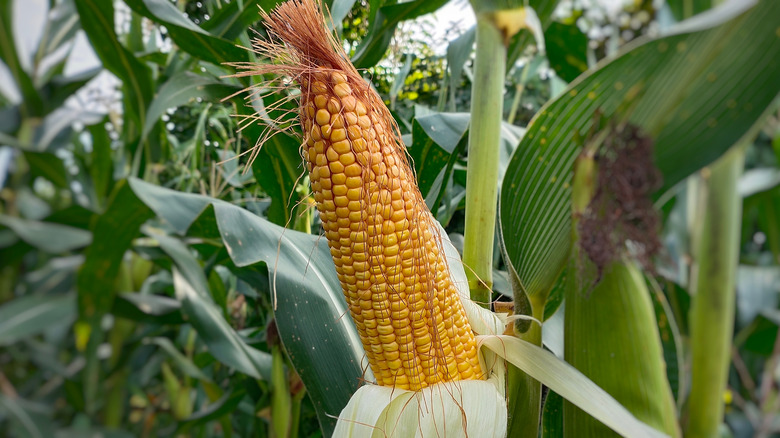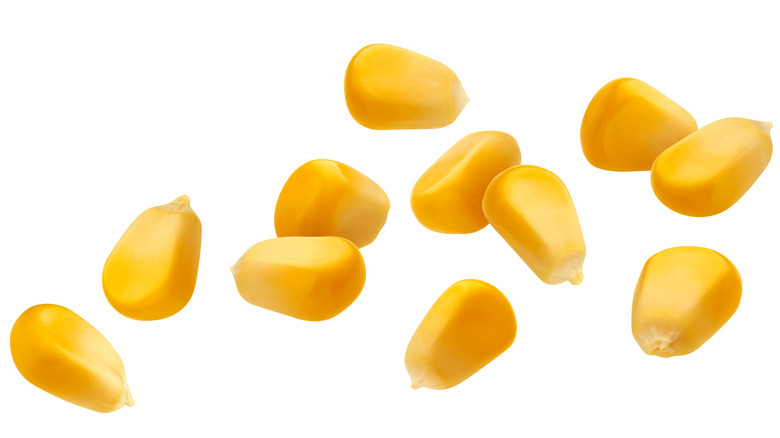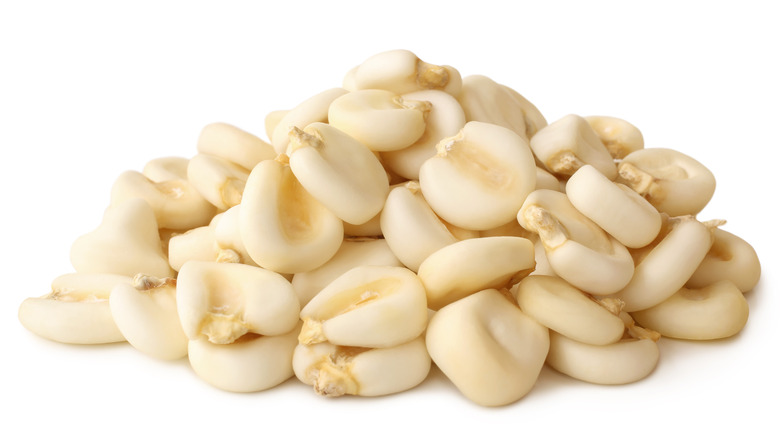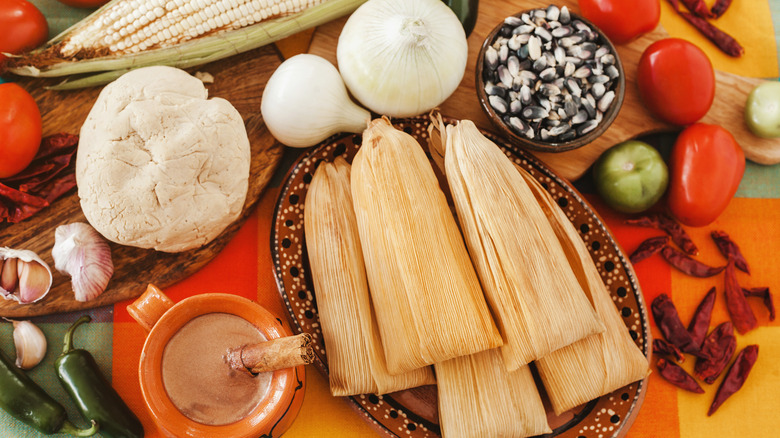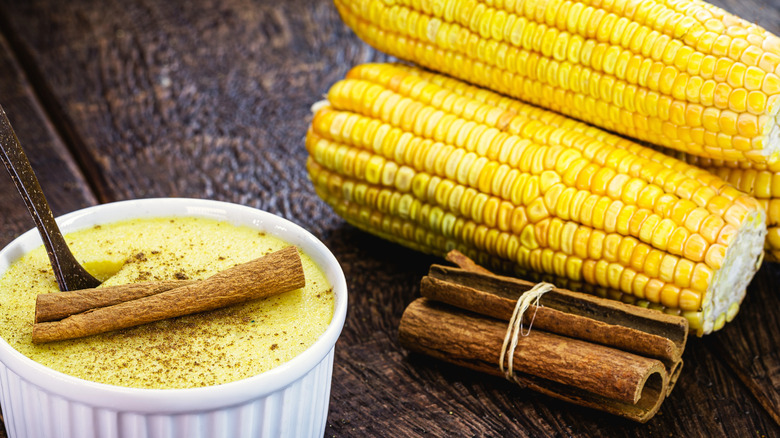This Is The Difference Between Hominy And Corn
Hominy and corn are very similar, in the sense that hominy is corn, kernels of corn to be exact, according to The Spruce Eats. Surely when you think of cornmeal, corn flakes or corn tortillas, you think of corn, right? That sweet, buttery, corn on the cob that's perfect at a BBQ? Wrong! That would be hominy.
The great thing about both is you can't have one without the other. Hominy is a fancy, tastier version of corn that you have probably already had if you indulge in corn tortilla tacos or tamales, says Eat This, Not That!. Hominy are very large kernels. Who would have thought there are different kinds of kernels than those in your popcorn bag?
The real difference between these two is that one is soaked in a lye or lime solution, turning that hardened kernel into a softer one, according to The Kitchn. Let's delve a little deeper into the pot, shall we?
What's the source of corn?
Corn, also known as maize, is wild grass that is planted by humans and must be cared for, says The Spruce Eats. Corn is one of the most important kinds of crops throughout the entire world, due to the related products that can be made from it. For those who love corn, you may not know that the yellow, buttery delight goes all the way back to 5000 BCE.
Corn has three main kinds of crops: sweet corn, dent corn, and flint corn. Sweet corn is, obviously, sweeter than most, with more sugar and less starch than the other two. Dent corn, also known as field corn, is the best for making dough and hominy, and also most commonly used to feed livestock. The most colorful corn of all is flint corn, which can be blue or red (via The Spruce Eats).
So, without planting regular corn crops, you would never get hominy. Nor would you get all the goodies that come along with it.
How is hominy made?
Unlike regular corn, hominy, a Mexican cuisine staple, isn't technically planted. It is a dent corn kernel that has undergone the nixtamalization process. (Try saying that word five times in a row.) The nixtamalization process is simply removing the kernels from the cob, drying them, and then soaking them in an alkali solution made from lime or lye (via My Recipes). (There is so much science in cooking.)
Hominy then turns into what looks like a bean, due to the doubling in size that the nixtamalization process causes. If you have ever had posole, a Mexican stew, you will see hominy in it. If the hominy is not nixtamalized, then you will be stuck with basic kernels that cannot produce the same products as hominy can.
My Recipes says that the "giant corn" is usually found in cans in the Mexican aisle, whereas regular corn is found in any kind of canned food section.
How hominy vs. corn is used for cooking
It is quite interesting to realize all of the things you may have thought were just made from your average canned corn, are actually made by a scientific process that really just gives you an oversized bean from corn. A tasty oversized bean, that is. The difference in cooking the two is vast, as one is simple and the other is not.
Regular field corn can be cooked straight on the cob using a pot of hot water, grill, or even a microwave if you want to go college-dorm-style for dinner (via Delish). Taking it off the cob allows for it to be added to stews, casseroles, or whatever else you may want to insert a bit of corn gold.
The cooking process for hominy, however, varies greatly, depending on what you want to do with it. Similarly to canned corn, you can also find canned hominy (via The Spruce Eats). You can eat it much like regular corn, with salt, pepper, and butter. But unlike regular corn, you rinse hominy like you would dried beans before cooking.
Hominy is just as versatile as corn, both being in multiple kinds of dishes and stews. It's hominy that's ground into masa, or dough flour, which is used for making tamales and tortillas (via The Spruce Eats).
The difference in nutritional value
Given their mutual roots, perhaps it's no surprise that hominy and corn are quite similar in nutritional value. (They are one in the same, remember?) A slight difference, however, is the nixtamalization process that makes hominy a bit better nutrition wise (via Eat This, Not That!). The soaking process releases more vitamin B3. Hominy is also better suited for a gluten-free diet.
While both are high in carbs and packed with fiber, one cup of sweet yellow corn is 177 calories, and has a ton of vitamins, like several of an adult's daily requirements — 17% of vitamin C, 24% of vitamin B1, 19% of folate, 11% of magnesium, and 10% potassium, according to Healthline.
By comparison, adults eating one cup of hominy will get several requirements as well: 64% of vitamin B1, 40% of vitamin B3, 64% of folate, 20% magnesium, and 8% potassium, on top of being a bit lower in calories, according to Livestrong. You really can't go wrong with either option, but if you have never opened up a can of hominy before, maybe give it a shot.
